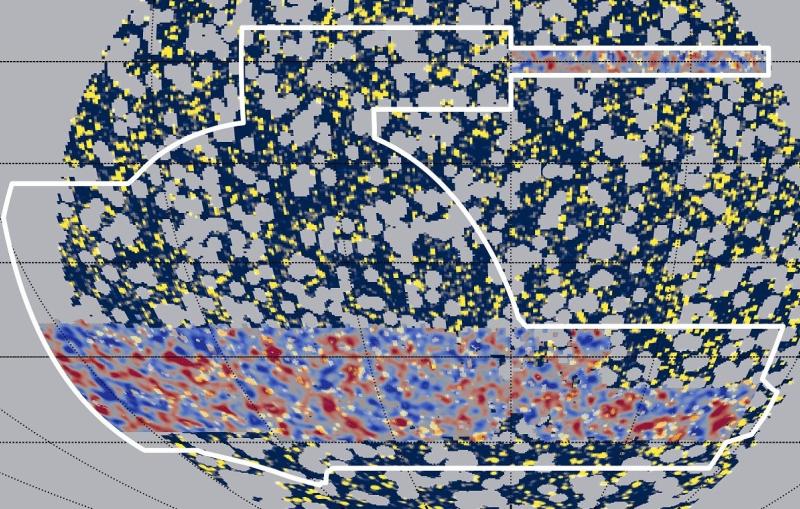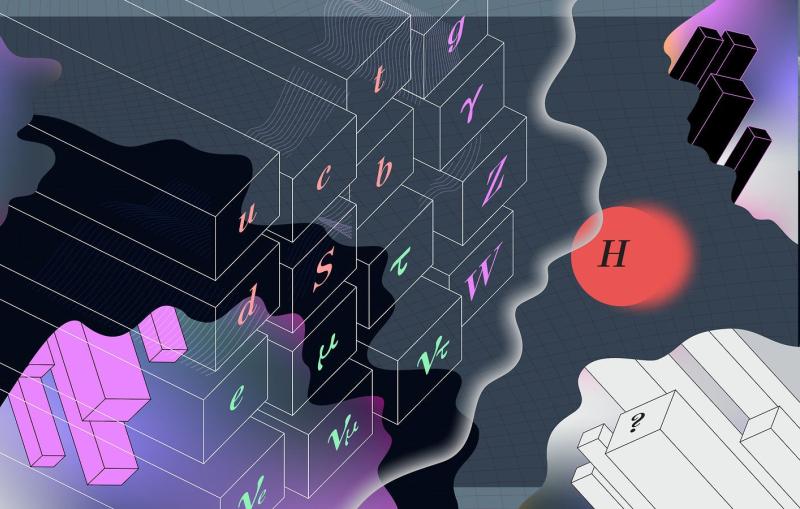Home Computers Discover Gamma-ray Pulsars
As volunteers for a project called Einstein@Home, citizen scientists unleashed the unused cycles of their home computers on data from the Large Area Telescope, the SLAC-operated main instrument of the Fermi Gamma-ray Space Telescope, and found four new pulsars.
By from the Albert Einstein Institute Hannover
The combination of globally distributed computing power and innovative analysis methods proves to be a recipe for success in the search for new pulsars. Scientists from the Max Planck Institutes for Gravitational Physics and Radio Astronomy together with international colleagues have now discovered four gamma-ray pulsars in data from the Fermi Gamma-ray Space Telescope. The breakthrough came using the distributed computing project Einstein@Home, which connects more than 200,000 computers from 40,000 participants around the world to a global supercomputer. The discoveries include volunteers from Australia, Canada, France, Germany, Japan, and the USA.
Since its launch in 2008, Fermi has been observing the entire sky in gamma-rays. It has discovered thousands of previously unknown gamma-ray sources, among which are possibly hundreds of yet undiscovered pulsars – compact and rapidly rotating remnants of exploded stars. Identifying these new gamma-ray pulsars, however, is computationally very expensive – wide parameter ranges have to be "scanned" at very high resolution.
"Our innovative solution for the compute intensive search for gamma-ray pulsars is the combination of particularly efficient methods along with the distributed computing power of Einstein@Home," says Holger Pletsch, Independent Research Group Leader at the Max Planck Institute for Gravitational Physics (Albert Einstein Institute/AEI), and lead author of the study. "The volunteers from around the world enable us to deal with the huge computational challenge posed by the Fermi data analysis. In this way, they provide an invaluable service to astronomy," says Pletsch.
Distributed Computing for Astronomy
Einstein@Home is a joint project of the Center for Gravitation and Cosmology at the University of Wisconsin–Milwaukee and the AEI in Hannover. It is funded by the National Science Foundation and the Max Planck Society. Since mid-2011, Einstein@Home has been searching for signals from gamma-ray pulsars in Fermi data. The project was founded in 2005 to search for gravitational-wave signals in data from the LIGO detectors – still the main task of Einstein@Home. Since early 2009, the project has also been conducting successful searches for new radio pulsars.
"The first-time discovery of gamma-ray pulsars by Einstein@Home is a milestone – not only for us but also for our project volunteers. It shows that everyone with a computer can contribute to cutting-edge science and make astronomical discoveries," says co-author Bruce Allen, director at the AEI and principal investigator of Einstein@Home. "I'm hoping that our enthusiasm will inspire more people to help us with making further discoveries."
Pulsars for everyone
The volunteers who contributed to the discoveries are thrilled. "At first I was a bit dumbfounded and thought someone was playing a hoax on me. But after I did some research everything checked out. That someone as insignificant as myself could make a difference was amazing," says Thomas M. Jackson from Kentucky in the USA, who runs Einstein@Home on his quad-core processor.
Hans-Peter Tobler from Rellingen, Germany, has been participating in Einstein@Home since 2005 and has now helped in the discovery of a gamma-ray pulsar: "I'm fascinated by astronomy. Einstein@Home allows me to contribute to this field of science, even though I'm not a professional astronomer myself." With hundreds of thousands of computers teaming up, he never expected that his PC would discover anything.
All Einstein@Home volunteers are acknowledged for their contributions in the scientific publication. The astronomers particularly mention the eight volunteers whose computers made the discoveries. The volunteers are from Australia, Canada, France, Germany, Japan, and the USA. As a token of appreciation, they receive special certificates of discovery.
New Window for the Discovery of Neutron Stars
Not only are the four gamma-ray pulsars the first to be found with a distributed volunteer computing project, but also the pulsars are special, too. "It is exciting that all four pulsars are in the plane of our Milky Way," says co-author Michael Kramer, director at the Max Planck Institute for Radio Astronomy (MPIfR). Earlier surveys with radio telescopes have been thoroughly searching this part of the sky, but the four new pulsars had remained hidden and only one comparable neutron star had been found.
Apparently, the pulsars are only visible in gamma-rays. The radio and gamma-ray emission are produced in different regions around the pulsar. Depending on the orientation of the pulsar, the narrow radio beam might miss Earth, while the wider beam of gamma-ray photons could be detectable. Dedicated follow-up observations of all four new discoveries with the MPIfR's 100-meter Effelsberg radio telescope and the Australian Parkes Observatory confirm the absence of any detectable radio emission.
"With the successful blind searches for gamma-ray pulsars, we use a new window for the discovery of neutron stars," says Kramer. The new searches employ methods inspired by gravitational-wave data analysis. Using these, astronomers around Pletsch discovered all of the eleven gamma-ray pulsars found in the last three years of blind searches in Fermi data.
Young Neutron Stars with a Hiccup
Two of the newly discovered pulsars exhibited a sudden change in their otherwise perfectly regular rotation – they suffered a so-called pulsar glitch. During a glitch, the neutron star's rotation suddenly speeds up, then gradually becomes slower and returns to the initial rotation period after a few weeks. "We don't know the exact cause of these glitches yet, but measuring them can provide new insights into the incompletely understood neutron star interior," says co-author Lucas Guillemot, who worked as a researcher at MPIfR when the discoveries were made and has recently taken up a position at the LPC2E in Orléans.
Glitches mostly happen in newly born pulsars. According to the measurements of the astronomers, the four pulsars discovered now are between 30,000 and 60,000 years old – youngsters among neutron stars.
Discovery Potential
In the future, the efficient search methods will become increasingly important, since Fermi is scheduled to take data for at least another five years. The longer the measurement time, the weaker the pulsars the scientists can discover. With increasing measurement time, however, the computational costs grow quickly. Conventional methods are already too costly at present, but there is still headroom for the new methods.
"Only our methods will enable efficient blind pulsar searches in Fermi data in the future. Using the distributed computing power provided by the Einstein@Home volunteers, we hope to discover gamma-ray pulsars that are particularly far away or faint," says Pletsch.
For more information about pulsars and Einstein@Home, see the AEI press release. The paper describing the work is online here.







